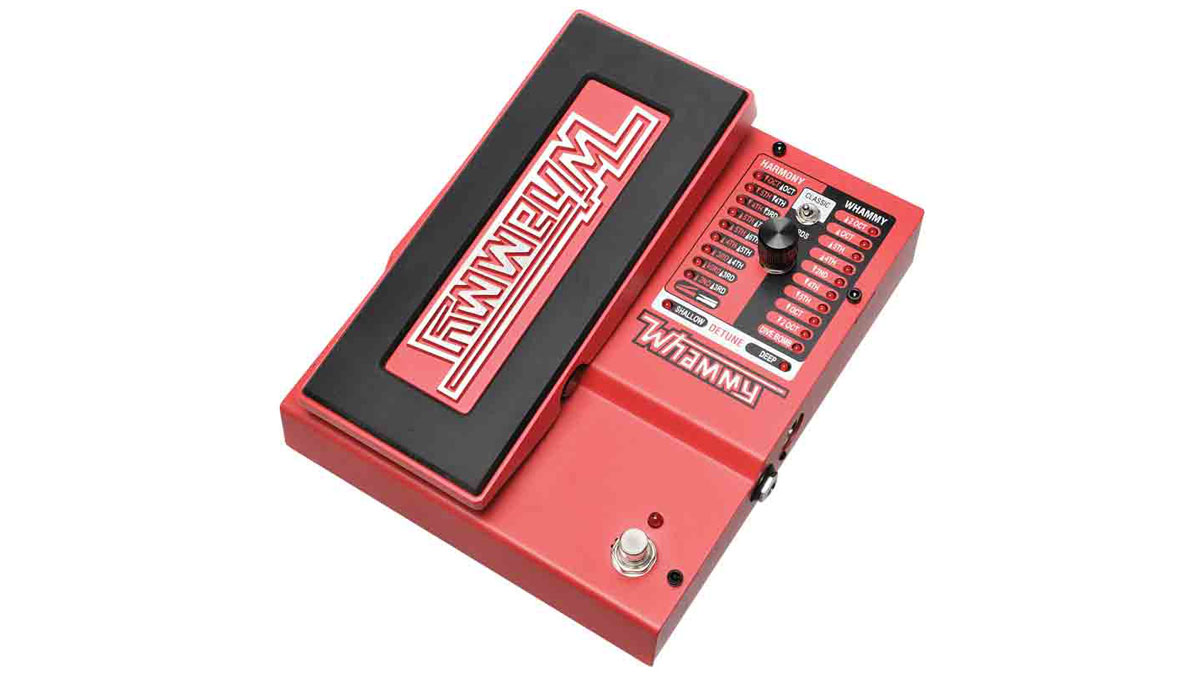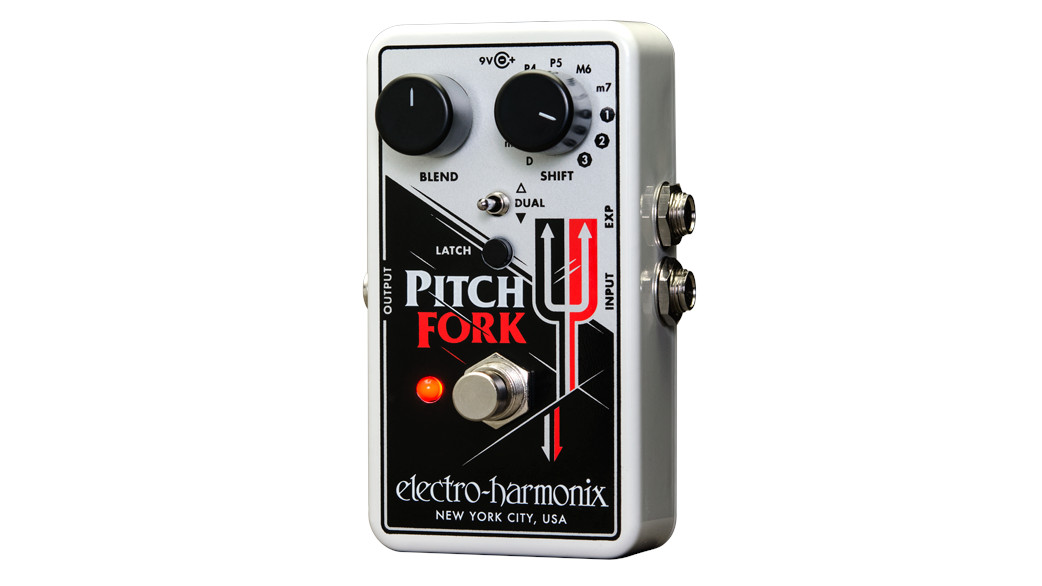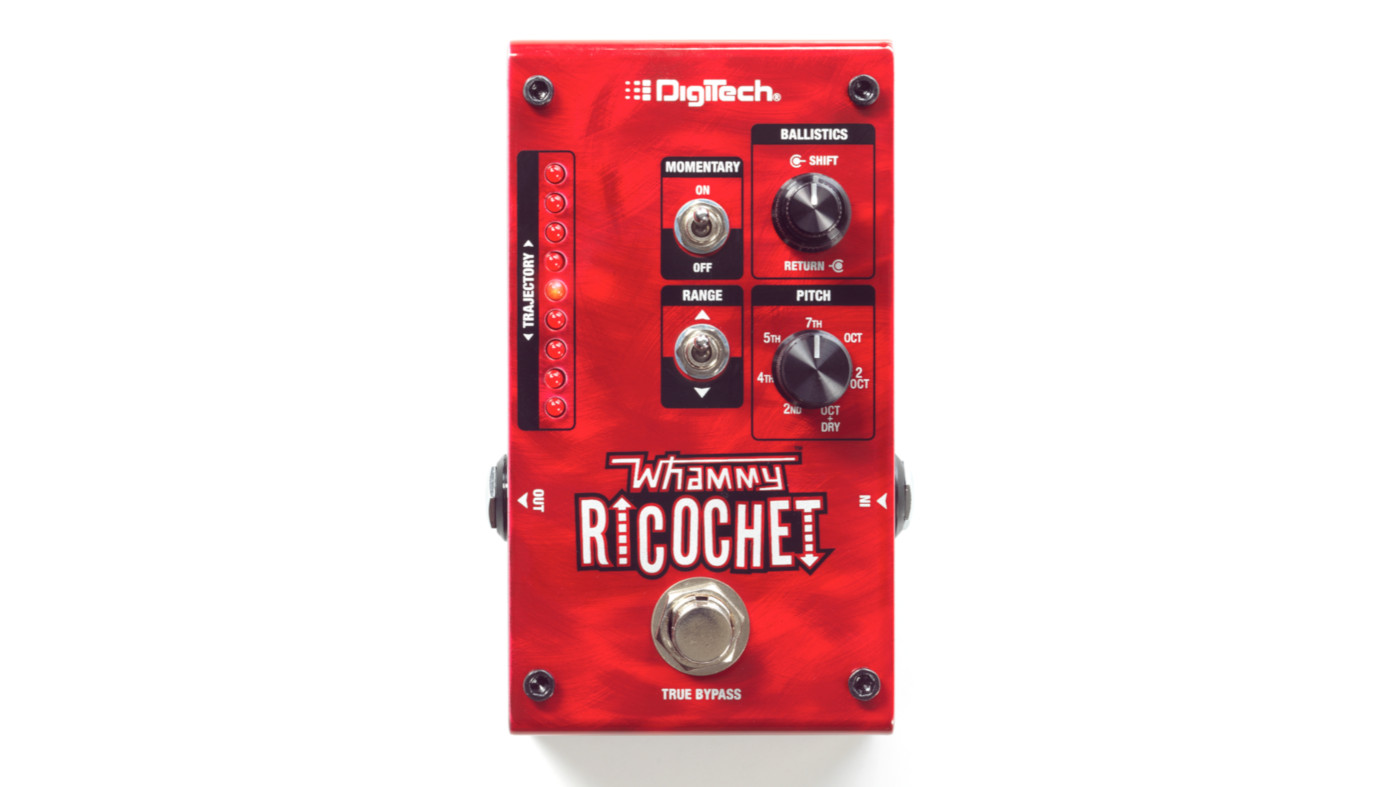The FX files: DigiTech Whammy
Everything you need to know about one of the most significant innovations in pedal tech

The secret weapon of players as eclectic as Steve Vai, Tom Morello, Matt Bellamy, and Jonny Greenwood, the DigiTech Whammy unlocked new registers and glitchy sounds.
The Whammy was introduced in 1989, becoming an instant classic. It’s hard to overstate the effect of a mass-market digital pitch-shifter becoming available for the first time, but the fact that you can hear its distinctive warble on so many records testifies to its popularity. Besides power users like Tom Morello, you can hear it on Steve Vai tracks, Smashing Pumpkins records, and as an increasingly prominent feature of Radiohead’s sound, for example on the main riff of My Iron Lung.
After the success of the WH-1, the Whammy II ditched the Ferrari Red colour scheme and re-oriented itself around a small LCD screen. It wasn’t as popular as the original, however - a failing that would carry over to the next pedal in the series, the XP-100 Whammy/Wah.
The XP series is most famous for the XP-300 Space Station, a box of weirdo effects still highly sought- after today and the inspiration for new effects like the Red Panda Tensor. The Bass Whammy was a bass-optimised variant of the pedal that was originally released around the time of the Whammy II, and then reissued due to player demand. Justin Chancellor of Tool was a prolific user.
The Whammy IV returned to an LCD-less interface and added modern functionality like a dry out and a MIDI in. The ability to control the pedal via MIDI opened up a wealth of new opportunities for control by third-party devices, which players like Ed O’Brien of Radiohead and Matt Bellamy of Muse used to their advantage, using outboard controllers like the Molten MIDI, or installing MIDI controllers into guitars.
The Whammy DT added polyphony and more drop-tuning modes, but its large size was a turn-off. The Whammy V again simplified, taking the polyphonic advancements and retaining MIDI control, but returning to the form factor of the Whammy IV.
Treadle
The treadle (lever) is the defining feature of the Whammy, whether used for expressive garbling of notes like Tom Morello, sound effect-like squeals, or kicking a solo up a notch. By dynamically changing the pitch, the character of the player can come through much more clearly, and there are literally thousands of ways to use the effect.
Want all the hottest music and gear news, reviews, deals, features and more, direct to your inbox? Sign up here.
Some players park it in toe down or heel down, some sweep between the two and accent particular notes, some use the act of sweeping as a sound effect in itself, and some experimental players park it part way through its sweep, for radically bitcrushed, dissonant sounds.
Mode (Whammy V only)
The modern Whammy V improved the tracking of the pedal, and added the ability to play polyphonic sounds, allowing for chords. However, knowing that many players were using the Whammy for its idiosyncratic sound, the engineers at DigiTech included a toggle to revert it to the glitchier tones of the Whammy IV, which would glitch on a chord input.
Pitch knob:
There are three areas to the pitch control - harmony, to the left, detune, on the top right, and the pitch-shift settings on the right. Although the names for some settings changed between models, broadly the harmonies on the left are a set of intervals within the octave, where toe down and heel down on the treadle are each a different harmony setting, allowing for some very unusual intervals to be created on-the-fly. The two detune settings are basically like a shallow and deep chorus, and the pitch-shift intervals are +2 octaves, +1 octave, -1 octave and -2 octaves.
On the original Whammy there was a -2nd setting that was renamed to ‘detune’ on some later models - you can hear this very clearly being used in the main riff for Swervedriver’s classic Never Lose That Feeling. Finally, later models of the Whammy included a dive bomb setting that emulated the sound of a whammy bar dropping the pitch until the strings are slack.
Under the influence

Electro-Harmonix Pitch Fork
£149
The EHX Pitch Fork is a pitch-shifter that boasts an even wider range than the Whammy, with +/-3 octaves on offer, as well as some simultaneous modes.
It supports an expression in for the true Whammy experience, but the main reason for the pedal’s success was a much smaller form factor, combined with decent tracking. It has latching and momentary modes, as well as controls for interval and blend.

DigiTech Whammy Ricochet
£101
The Ricochet, along with the DT and Whammy V, completes the current Whammy line-up. It’s a powerful, compact beast - although the jacks are regrettably on the sides, not the top.
It offers a variety of intervals, latching and momentary modes, and a great ballistic control that means you can adjust how fast it shifts to the target pitch and how fast it returns to the original pitch.

Electro-Harmonix Nano POG
£186
Using the Whammy in harmony mode is a mainstay of post-rock and math-rock, and in those circles most pedalboards will have a POG.
The original POG was a huge polyphonic pitch-shifter, but EHX struck gold when they pared it back to just the harmony functions on the Micro POG and Nano POG. Crucially, tracking on the POG is very good, and even when using the bass octave it delivers clear intonation.
Classic tones
Get the tone #1: Tom Morello is the DJ
Tom Morello’s solo from Bulls On Parade is created entirely out of pick scratches, kill switch and Whammy, to spine-chilling effect.
Tom played the Whammy like an instrument in its own right, to the extent that the intro of Voice Of The Voiceless is literally him twisting the pitch knob to create the riff after sounding a note.

- Pitch: +2 oct
Get the tone #2: Fury
The main riff to Fury by Muse is an appropriately apocalyptic set of octave chords played with a Whammy pedal accenting certain parts of the riff as Matt Bellamy rhythmically sweeps the pedal.
It was a trick he used for solos and breakdowns in early gigs, so it was only a matter of time before it ended up sparking a song.

- Pitch: +1 oct
Get the tone #3: Video game sounds
In math rock circles, some of the most iconic riffs come from a Whammy or pitch-shifter set to one or two octaves up while frenetic riffing occurs.
Probably the most famous of these riffs is Three Trapped Tigers’ virtuosic Cramm, but there are lots of other fantastic examples, like Masa from Adebisi Shank.

- Pitch: +2 oct
- Treadle: toe down
Alex Lynham is a gear obsessive who's been collecting and building modern and vintage equipment since he got his first Saturday job. Besides reviewing countless pedals for Total Guitar, he's written guides on how to build your first pedal, how to build a tube amp from a kit, and briefly went viral when he released a glitch delay pedal, the Atom Smasher.


